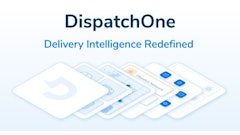
The vulnerability of our supply chain came into glaring view over the past two years. Empty shelves, long lead times and too few drivers have left many scrambling to find solutions. With demand for shorter shipping times and an increased need for flexibility, it is important to ensure safety is not sacrificed in the drive to meet increased consumer demands.
There are 37.9 million commercial vehicles registered in the United States, and it is estimated that those vehicles travel 300.05 billion miles a year. Every mile spent on the road comes with an increased chance of an accident. 500,000 trucking accidents occur each year in the United States, with about 5,000 per year resulting in death. Supply chain executives must prioritize the safety of both their vehicles and drivers to reduce accidents and keep goods and services moving smoothly across distribution networks.
Technology plays a key role in increasing safety and efficiency. In the past 20 years, fleet technology has evolved from basic Global Positioning Systems (GPS) to advanced artificial intelligence (AI)-powered solutions that proactively identify safety risks and alert drivers, providing real-time coaching to prevent incidents before they occur.
Modern fleets are facing modern problems, and technology continues to provide solutions. Modern fleet tech enables fleet managers to improve safety and optimize efficiency through data analytics that keep drivers and vehicles on track. From telematics to accessory monitoring to smart fuel management, there are a host of technologies available to keep our roads safe and our deliveries on time.
Eliminating distracted driving with AI cameras
According to the National Highway Traffic Safety Administration, 3,142 people died in the U.S. from distracted driving in 2020 alone and in 2019, 24% of all work-related deaths were from a work-related crash. Distracted driving continues to be a top contributing factor to commercial vehicle accidents.
Artificial intelligence has proved to be a particularly powerful safety tool. According to a report on AI and road safety from the International Transport Forum, in areas where precise and relevant data exists, AI is quite capable of identifying stretches of road that pose high risks for hazardous conditions of dangerous driving behavior. AI can also be easily integrated into dash cameras capable of noticing the signs of driver fatigue like eye movements, slow response time and more.
In-cab camera systems utilizing smart video and artificial intelligence can detect threats automatically, alerting drivers of other unsafe driving behaviors like using their phones, driving above or below the speed limit, lane departure and alerting to hazardous roadway conditions. The real-time distracted behavior alert are also sent to fleet managers, giving them data-driven insights to correct high-risks behavior and take preventative measures like increasing safety training. In fact, customers who integrated telematics and AI dash cams with proactive coaching and driver scorecards, have been shown to realize a 9X reduction in harsh driving incidents, including speeding, hard braking and rapid acceleration, key contributors to vehicle accidents. (The figures are based on an IntelliShift 30-day study of 8,054 vehicles measuring data of these harsh driving incidents.)
Transforming the supply chain with advanced telematics
Shipment delays are also becoming more common due to driver shortages. With advanced telematics, supply chain managers can optimize their routes and delivery schedules to ensure no time – or money – is wasted. Using telematics’ GPS tracking and on-board diagnostics capabilities, supply chain managers can monitor their fleet vehicles to ensure their deliveries are on schedule. If deliveries fall behind, managers can reassign drivers in real time to meet deadlines. The data collected through GPS can also be used to increase safety by avoiding dangerous roads or even simply avoiding left-hand turns.
By determining more dangerous routes, telematic systems can offer alternative options for drivers, avoiding safety issues and improving the bottom line for fleets. Companies have used industry intelligence to alter roadway strategies. UPS, for instance, has restricted the use of left turns for drivers after a study from a National Highway Traffic and Safety Administration on crash factors in intersections concluded that left turns occurred in 22.2 percent of crashes compared to the 1.2 percent for right turns. By utilizing data, they were able to determine that left hand turns were not as safe or fuel efficient and made alternative routes for their drivers.
Predictive maintenance enhances safety + extends life of vehicles
A leading cause of accidents in fleets is mechanical defects, most commonly with the tires and brakes. These accidents could easily be avoided by implementing more proactive and predictive maintenance. On-board diagnostics can be utilized to make predictive fleet maintenance a reality, alerting to vehicle diagnostics and maintenance reminders – assisting fleet managers in staying on schedule for repairs.
Predictive maintenance can reduce downtime for fleets and enable alternating maintenance schedules to prevent any delays in business operations for fleets, all while improving vehicle safety. With tire pressure tracking, battery life alerts and other data, this technology can identify minor vehicle issues and stop them from disrupting the safety of commercial vehicles before it is even an issue.
Predictive maintenance technology can also enable supply chain managers to extend the life of their fleet. Through proactive maintenance programs, supply chain operators can save thousands of dollars in the long run by avoiding vehicle breakdowns, downtime, and other expenses.
It is hard to imagine with all the capabilities of artificial intelligence and telematics today, that 20 years ago, the integration of GPS was just taking off. The improvements artificial intelligence and telematics can provide for driver safety are significant. We are only beginning to scratch the surface of what this technology is capable of.



















